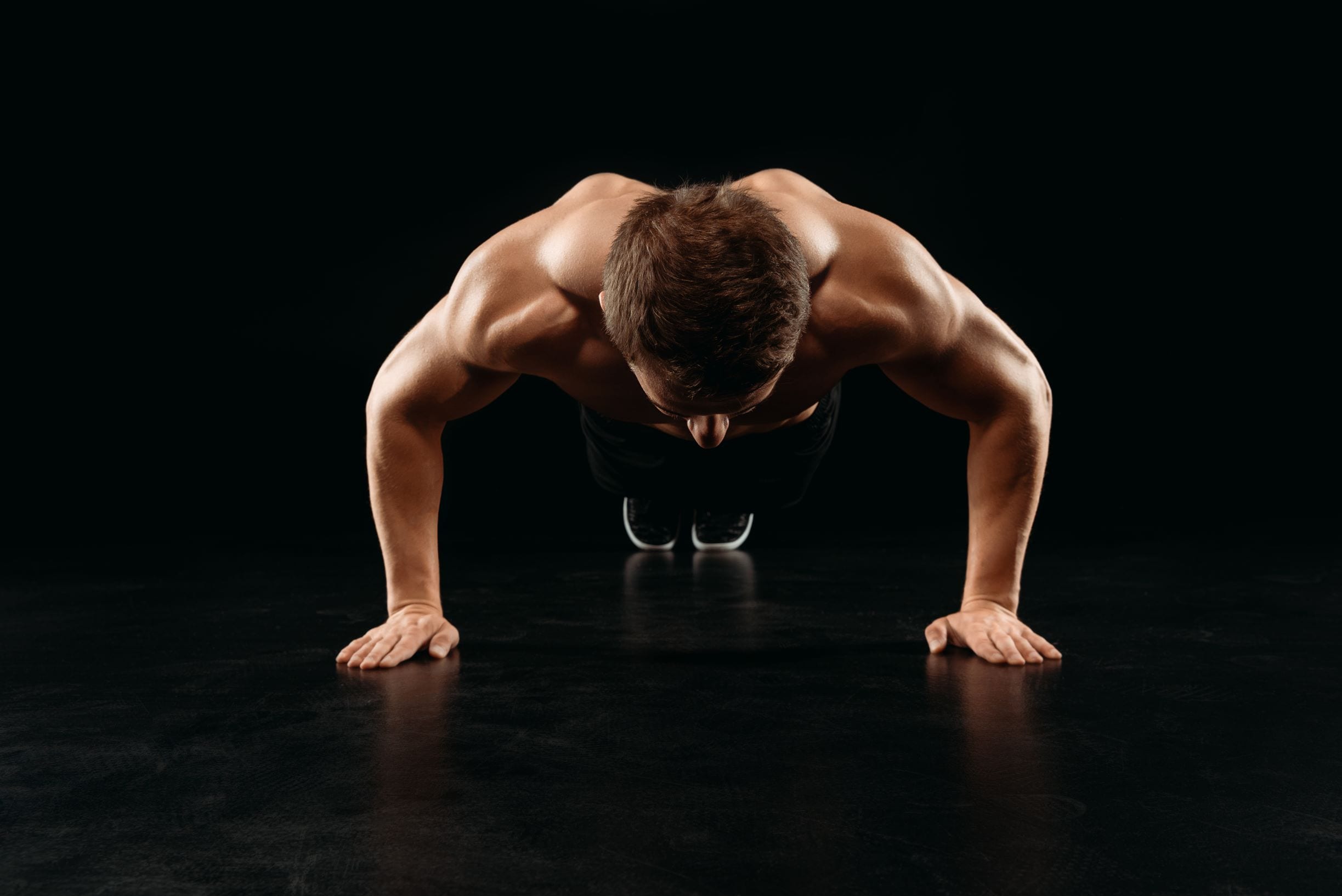Strength training is not just about getting visually pleasing muscles. It’s all about your health. When you continuously target specific muscle groups, they improve the functionality of your movements and metabolism. There are a bunch of home workouts of basic exercise that build your muscle strength, read on.

Research from the Harvard Medical School also indicates that resistance training can lead to stronger bones as well. This is significant because, in the United States, two million men and eight million women are vulnerable to having osteoporosis.
Other benefits of strength training include lower risks of injury and more sensitivity to the insulin hormone. Below are some strength exercises that you can do in the comfort of your homes.
Push-Ups

Push-ups is a classic strength-building exercise that will not require any equipment and ideal for a home workout. Simply put your feet and hands on the floor. Then keep your hands more than shoulder-width apart while maintaining a straight back.
Slowly lower your body to the floor by bending your arms until your chest is in contact with the ground. Hold it for a one to two seconds, then extend you arms so they are straight, then return to the starting position. Repeat this for twelve times.
Push-ups target the chest area and provide additional boosts to the shoulders and triceps. For variations, you can put extra weight in your back.
Chair Dips

[Dropcap]T{/Dropcap]his is another intensive exercise that you can do in your home workout. You just need a reliable chair to work out your triceps, deltoids (shoulders), and pectorals (chest).
Place the chair behind you and face away from the seat. Put your hands on the edge of the seat at a distance of shoulder width. Keep arms straight and bend knees as if sitting.
With you arms at a 90 degree angle to enable you to lower your body. Hold this for a second before straightening your arms again as your return to the starting position. Hit at least five repetitions and increase the difficulty by putting additional weight.
Crunches
Crunches are high-intensity strength exercises that target abdominal muscles primarily. Like push-ups, it doesn’t require any equipment, although a good yoga mat would be comfortable.
On a hard and smooth surface, lie on your back and keep legs bent. Place hands behind your head or on the chest. Lift your upper body and contract your abdominal muscles as you raise your shoulder blades. The neck should be straight and do not use the hands to assist your upper body. There will be a burn in your abs, an indication that you are doing the exercise correctly. Repeat until you reach twelve repetitions.
Deadlift

As far as comprehensive coverage is concerned, the deadlift is the best exercise you can choose for your lower body because it works most of its muscle groups, including hamstrings, quadriceps, glutes, and the back. These can easily be undertaken at a home workout. You don’t need much and can use a variety of heavy objects to do the lift.
You don’t even need free weights. You can use your gym bag. Place the bag or heavy object in front of your feet. Stand with the object in front of you with feet together. Bend your knees and push your hips back to grab the bag. The back should be straight. If you slouch, it can cause injury.
Hoist yourself up and straighten your back and legs. As you emerge, protrude your chest and contract your shoulder blades. Achieve at least five repetitions.
For everything you want to know about deadlifts,read “11 Deadlifts Must-Know Tips”.
Hammer Curls

T his is an exercise that is tailored specifically for your biceps. Hold a dumbbell or even a water jar in each hand and keep your arms straight, tucked in your side. The wrists should be in a straight line with your arm.
Contract your biceps by using your forearm to bring the weights upward in a curling motion. As your hand comes in contact with your arm, hold it for a second to squeeze your biceps. Lower the weights back into its origin. Do this for five to twelve repetitions.
Overhead Press

Instead of a bench press, you can do an overhead press with a weighted gym bag at home workout. This can still effectively target your triceps, traps, and deltoids. To complete this exercise, you also need to tighten your core.
To do the exercise, stand straight and keep the feet at a distance of shoulder width. Puff up your chest, then grab the gym bag and place it across the front shoulders as it rests on the collarbone. Squeeze your glutes for stability and push the gym bag in a straight line. Move your head back as you press it to ensure a straight line. Hold the bag above your head with arms straight, then lower it back to your shoulder. Continue this for twelve repetitions.
Frequency of Exercising
Consistency of exercise is important to keep yourself healthy. But you should be careful not to overdo it. The golden standard is to have two days of resistance training exercises in a week, according to the physical activity guidelines of the HHS. All muscle groups should be included in these workouts from the hips, back, chest, legs, shoulders, abdomen, and chest.
The Centers for Disease Control and Prevention recommends at least eight to twelve repetitions of an exercise for each muscle group. To maximize the burn, you need to work the groups to the point when a repetition is challenging to be done.
The National Institute of Health warns that the same muscle group should not be exercised for two days in a row. Recovery time is essential for muscles to gain strength.
Planning of the home workout exercise regime is important to avoid injury and get strong and fitter in the safest possible way.
Avoidance of Injury
Injuries can happen, even at the home workout, when you do not have the correct position and form when doing resistance training. The Mayo Clinic Sports Medicine Center reports that a bad technique can be counterproductive and can waste your time. To make sure the right technique is observed, a professional trainer or exercise videos can be beneficial.
The NIH recommends a lighter weight that you can accomplish for eight repetitions before proceeding to more challenging sets. The difficulty should increase gradually. Research from the American College of Sports Medicine indicates that you can only increase the weight by two to ten percent if you are already comfortable lifting a specific weight. Keep increasing the difficulty if the exercise becomes easy already.
Safety First!
Resistance training at the home workout is an excellent way to build strength while keeping your health in top shape. Mix your routines of bodyweight exercises with strength training. Its intervals should be three times a week at most.
Do not overtrain because the time you will require to heal from an injury will be lost time for your strength training. During your rest days, work on improving your cardiovascular capabilities or weight loss. Most importantly, do not forget to eat well. Watch what you eat and control your calories for maximum strength gain. Typically, a mix of fruits, vegetables, lean protein, and whole grains should do the trick.
Do not overtrain because the time you will require to heal from an injury will be lost time for your strength training. During your rest days, work on improving your cardiovascular capabilities or weight loss. Most importantly, do not forget to eat well. Watch what you eat and control your calories for maximum strength gain. Typically, a mix of fruits, vegetables, lean protein, and whole grains should do the trick.
Other Articles you may like.
Sphinx Pose
Great way to stretch your back and relieve the tension. It helps your buttocks and stomach muscles as well as clearing your mind.
Butterfly Stretch
The butterfly stretch is great in improving the flexibility in the inner thigh adductor muscles – as well as the hips. Learn the bascs first
Extended Puppy Pose
The back or extended puppy pose greatly relieves stress by deeply stretching the spines. It also feels good after sitting down all day.






